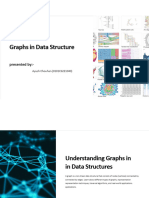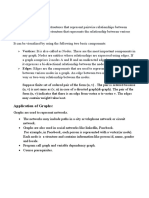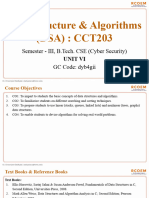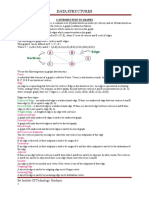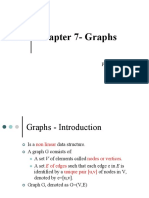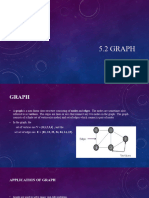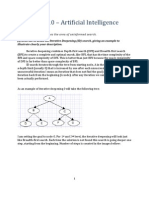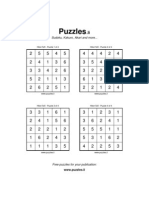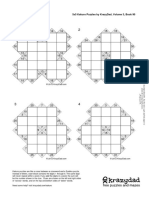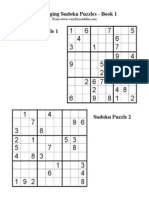0% found this document useful (0 votes)
34 views3 pagesGraphs in Data Structures
Graphs are data structures consisting of nodes (vertices) connected by edges, used to model relationships in various real-world scenarios like social networks and road maps. They can be directed or undirected, weighted or unweighted, and are explored using algorithms such as BFS, DFS, and Dijkstra's algorithm. The choice of representation (adjacency matrix or list) affects the efficiency of operations like adding or removing vertices and edges.
Uploaded by
gssschhakohCopyright
© © All Rights Reserved
We take content rights seriously. If you suspect this is your content, claim it here.
Available Formats
Download as DOCX, PDF, TXT or read online on Scribd
0% found this document useful (0 votes)
34 views3 pagesGraphs in Data Structures
Graphs are data structures consisting of nodes (vertices) connected by edges, used to model relationships in various real-world scenarios like social networks and road maps. They can be directed or undirected, weighted or unweighted, and are explored using algorithms such as BFS, DFS, and Dijkstra's algorithm. The choice of representation (adjacency matrix or list) affects the efficiency of operations like adding or removing vertices and edges.
Uploaded by
gssschhakohCopyright
© © All Rights Reserved
We take content rights seriously. If you suspect this is your content, claim it here.
Available Formats
Download as DOCX, PDF, TXT or read online on Scribd
/ 3

